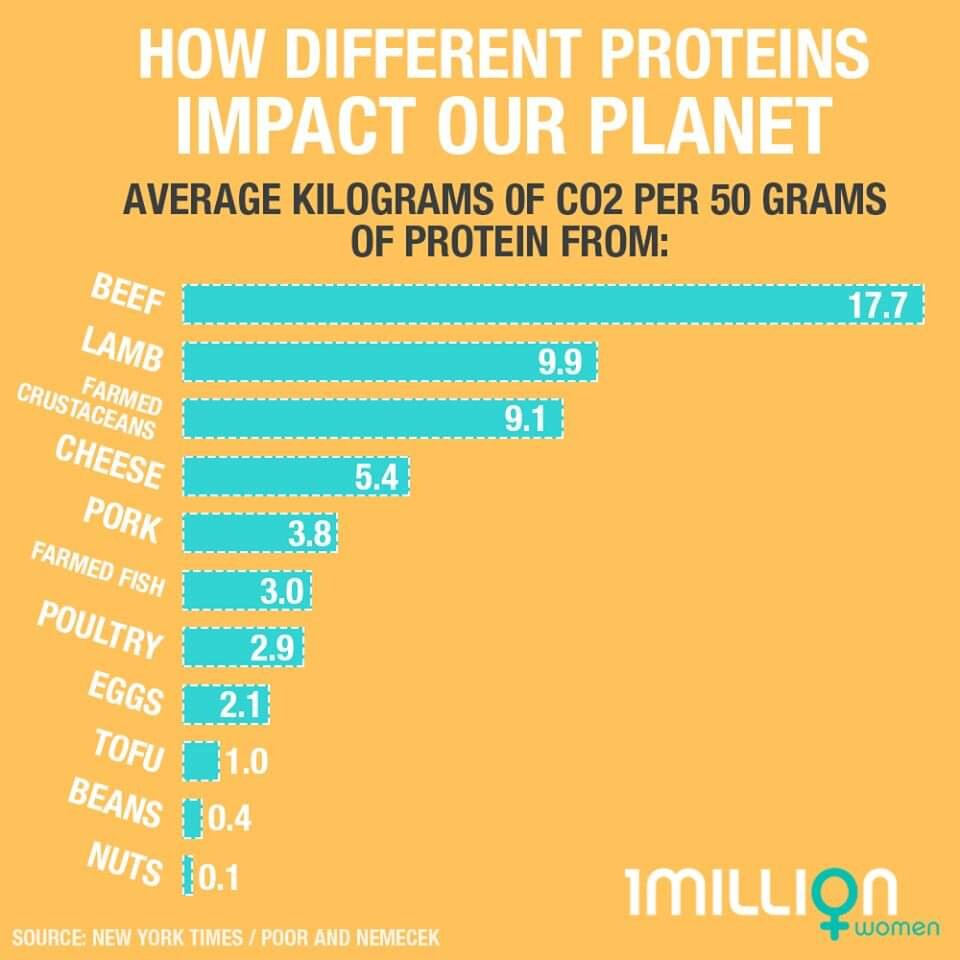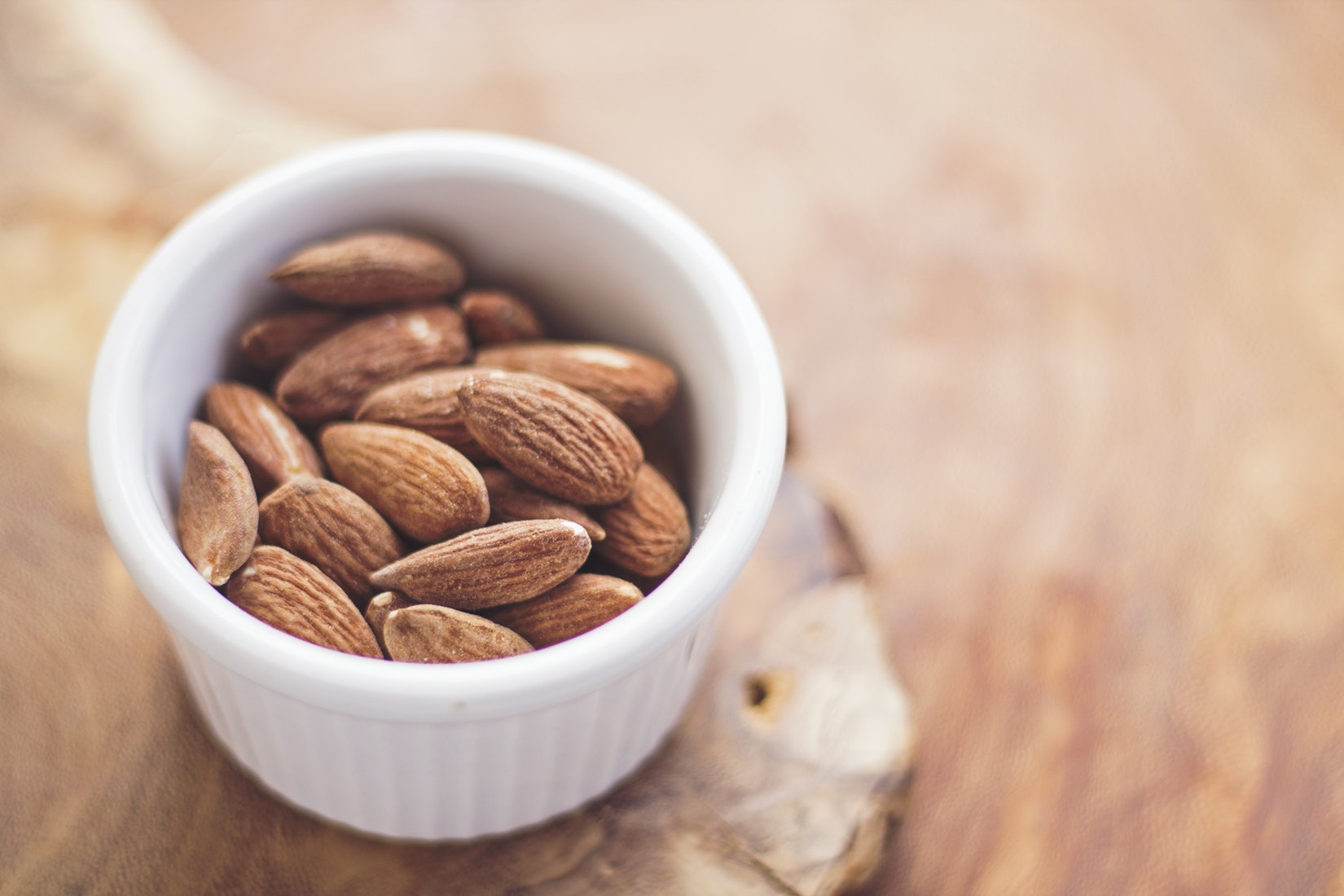Your guide to muscle-building, plant-based proteins
Americans are taught to look to meat for their protein, a nutrient that can just as easily be found in healthier, more climate-friendly food sources, like vegetables, nuts and grains.
You’re a vegan? But how do you get enough protein? I can’t tell you how many times I’ve heard this question. People are genuinely worried about me even though a plant-based diet is really healthy, and so am I.
“Protein is most definitely not a synonym for meat.”
It’s strange how much Americans focus on protein and how very little we know about it. First, we need far less of it than most people know. The average American eats 1.5 times more than we need. We only need about 40 to 60 grams a day, depending on your size. It’s also not its own food group, as is suggested by the USDA. It’s a nutrient.
Americans are also taught to look to meat for their protein, which is a shame because protein is really easy to find in healthier, more environmentally friendly sources like veggies, legumes, nuts, seeds, and grains. “'Protein' is most definitely not a synonym for meat,” says Marion Nestle, a nutrition scientist at New York University. “Vegans, who consume no animal products at all, do not lack for protein.”
the trouble with meat
I gave up eating meat for a number of reasons. It's high in saturated fat, cholesterol, and calories. Eating it has been linked to higher rates of heart disease, certain types of cancer, type 2 diabetes, and stroke. The animal agriculture industry is cruel, wastes extraordinary amounts of water, and contributes significantly to global warming, among other environmental problems. Plus, animals are often pumped up with antibiotics, because industrial farms are so unhealthy.
I don't eat dairy either, for many of the same reasons. But I hardly ever worry about getting enough protein. I get plenty of it simply by eating a varied plant-based diet. I also follow the guidance shared by the nutritionists at Your Daily Vegan: “If you are consuming enough [plant-based] calories to sustain your weight,” they write, “you are likely meeting your protein needs.”
sources of planted-based protein
So, where do I get my protein? I’ve listed some of the foods with the highest protein content. The key to a healthy vegan diet is eating a variety of items from every category.
• Legumes •
Legumes are a plant family that includes peas, beans, and lentils. Beans are definitely a staple in my diet, since they’re filling, cheap, and extremely nutritious. I recommend using beans in soups and stews, throwing them in salads, or adding them to grain dishes. Lentils are also really versatile. I really love using them in simple Indian-inspired curries and daals.
Soybeans: 22g
Lentils: 18g
Chickpeas: 15g
Black, kidney, pinto, & lima beans: 15g
| Serving: 1 cup cooked |
In addition to being a great a source of protein, almonds contain dietary fiber, antioxidants, and essential vitamins.
• Nuts & Seeds •
Relying on nuts and seeds is a great way to add protein to a meal while adding a little crunch. Many are also high in important vitamins and nutrients, such as iron, vitamin B, and omega 3 fatty acids (walnuts!). I find that nuts and seeds also made great additions to parfaits, salads, pasta, baked goods, and more.
Chia seeds: 12g
Hemp seeds: 10g
Peanuts: 9g
Flax & sunflower seeds: 8g
Sesame & pumpkin seeds: 7g
Almonds & pistachios: 7g
Walnuts & cashews: 5g
| serving: 4 tbsp |
Breakfast bowls are a great way to pack multiple proteins into one meal.
• grains •
Grains may not be the first food to come to mind when thinking of protein but they can be a reliable source, especially when paired with other plant-based sources. Many types of bread, noodles, and breakfast cereals include protein, especially if it's whole grain. As for pasta, the more semolina in contains the higher the protein count.
Quinoa: 5 to 8g
Oats: 7g
Wild rice: 7g
Whole wheat pasta: 6g
Macaroni: 8 g
Brown rice: 5g
Barley: 5g
1 slice whole wheat bread: 3.5g
| serving: 1 cup cooked |
• Vegetables •
It's well known that vegetables have a lot of vitamins and fiber. But many also contain enough protein to help build muscle. Whether you roast, steam, boil, blend, or eat them plain, vegetables are a protein category that should not be overlooked.
Edamame (cooked): 17g
Potato (with skin): 5g
Oyster mushrooms: 5g
Green peas: 8g
Broccoli: 6g
Asparagus (1 spear): .4g
Spinach, cooked: 5.35g
| serving: 1 cup, unless otherwise indicated |
• Faux Meat Substitutes •
Lots of great plant-based alternatives to meat are available right now. Here are some favorites. These products harness the protein power of soybeans, wheat gluten, or peas in very protein-dense veggie sausages, patties, deli slices, strips, and roasts. I substitute them for meat in recipes all the time.
Tofu (0.5 cup): 22g
Seitan: A high-protein meat substitute made from vital wheat gluten. One popular commercial brands is Field Roast; see their products for nutrition information.
Pea protein: Used to make various plant-based alternatives including non-dairy milk (8g in 1 cup) and high-protein veggie patties (23g each).
All nutrition information comes from the USDA Food Composition Database. We've provided only a sampling of plant-based proteins. Here's more information on plant-based proteins.
Takeaway: It’s easy to get protein from plants, whether that means swapping plant protein meat for plant protein during some meals or going full-on vegan. The less we rely on animal-based foods, the closer we get to reaching our climate goals and developing a healthy food system. Find more plant-based meal inspiration with our Good Food Recipes.
Hayley Davis is former Stone Pier Press News Fellow. She lives in Berkeley, California.












